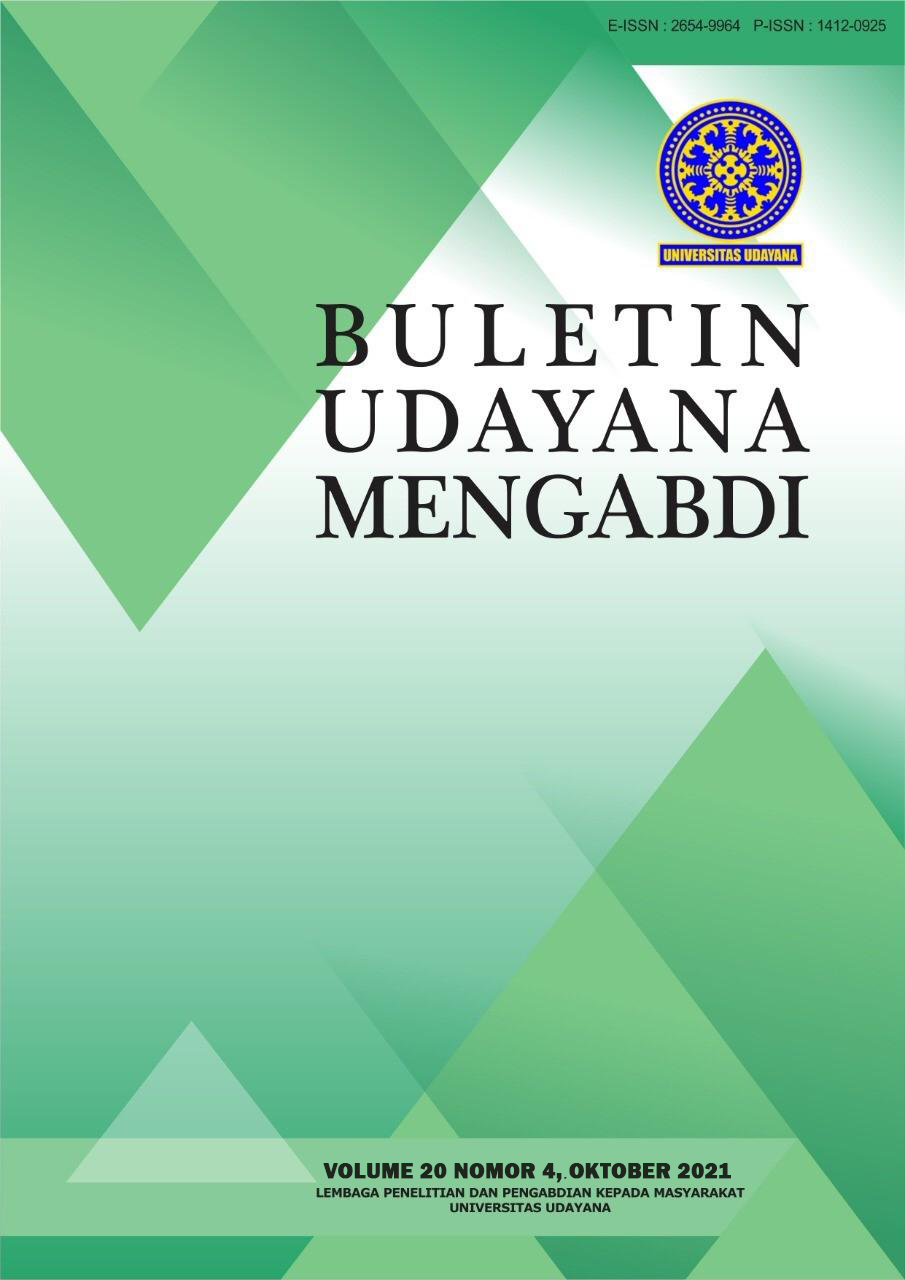PROGRAM PELATIHAN DAN PENDAMPINGAN PASIEN HEMODIALISIS DALAM UPAYA AKSELERASI CAPAIAN ADEKUASI HEMODIALISIS
Abstract
Adekuasi hemodialisis merupakan parameter penting yang mencerminkan keberhasilan proses hemodialisis. Salah satu permasalahan terkait capaian adekuasi hemodialisis adalah tidak patuhnya pasien terhadap manajemen dan peresepan hemodialisis. Oleh karenanya perlu dirancang program yang melatih pasien sehingga memiliki kemampuan dalam melakukan manajemen penyakit dan meningkatkan kepatuhan terhadap terapi. Program pelatihan dan pendampingan dirancang untuk meningkatkan kepatuhan pasien terhadap terapi dan untuk memantau perubahan kondisi pasien selama proses hemodialisis. Tujuan program ini adalah untuk mempercepat capaian adekuasi hemodialisis. Peserta yang terlibat adalah pasien yang rutin menjalani hemodialisis selama dua kali seminggu. Pasien diberikan pelatihan dan pendampingan mengenai adekuasi, manajemen penyakit gagal ginjal dan hemodialisis. Hasil menunjukkan adanya peningkatan pengetahuan dan kepatuhan pasien dalam melakukan manajemen penyakit. Capaian adekuasi ditemukan meningkat setelah diberikan program ini. Oleh karenanya pendampingan bagi pasien hemodialisis sangat penting dilakukan dan perlu mendapatkan perhatian oleh tenaga kesehatan yang bertugas di ruang hemodialisis.
Downloads
References
Daugirdas, J.T. (2015). Kt/V (and especially its modifications) remains a useful measure of hemodialysis dose. Kidney International, 88, 466–473. DOI: https://doi.org/10.1038/ki.2015.204
Himmelffarb, J., & Ikizler, T. (2010). Hemodialysis. The new engl and journal of medicine 2010. 363:1833-45.
Hong, Wp., Lee, YJ. The association of dialysis adequacy, body mass index, and mortality among hemodialysis patients. BMC Nephrol 20, 382 (2019). https://doi.org/10.1186/s12882-019-1570-0
Jindal, K., Chan, C.T., Deziel, C., Hirsch, D., Soroka, S.D., Tonelli, M., & Culleton, B.F. (2006). CHAPTER 1: Hemodialysis Adequacy in Adults. JASN, 17 (3 suppl 1) S4-S7
Johnson, R. J., Feehally, J., & Floege, J. (2015). Comprehensive clinical nephrology (5th ed.). Philadelphia: Elsevier Saunders
KDOQI. (2016). KDOQI Hemodialysis adequacy clinical practice guideline update 2015: What you need to know. Available at: https://www.kidney.org/sites/default/files/KDOQI-HD-update-NRAA- 2016FINAL.pdf
Qunibi, W.Y. (2021). Prescribing and assessing adequate hemodialysis. https://www.uptodate.com/contents/prescribing-and-assessing-adequate-hemodialysis
Saran, R., Robinson, B., Abbott, K.C., ... Shahinian, V. (2018). US Renal data system 2017 annual data report: Epidemiology of kidney disease in the United States. Am J Kidney Dis, 71(3s1), A7. doi: 10.1053/j.ajkd.2018.01.002.
Thomas, N. (2014). Renal nursing (4th ed.). United Kingdom: Wiley Blackwell

This work is licensed under a Creative Commons Attribution-ShareAlike 4.0 International License.

This work is licensed under a Creative Commons Attribution-ShareAlike 4.0 International License.




.png)


1.png) GARUDA - GARBA RUJUKAN DIGITAL
GARUDA - GARBA RUJUKAN DIGITAL



